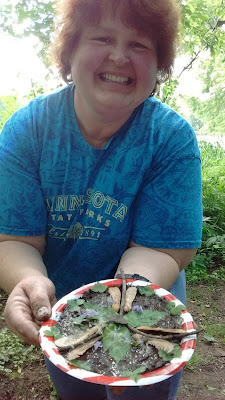 This week has been anything, but normal. We are participating in the Vacation Bible School (VBS) at Living Faith Church . While an honor to be apart of this fun experience, it changes the routine of our classroom dramatically. Anyone who works with children understands the value of routine and its importance to children. This week has had me reflecting on chaos and how I handle it as well as how my reactions affect the children looking for me to be the one stable element in the whirl wind of fun.
This week has been anything, but normal. We are participating in the Vacation Bible School (VBS) at Living Faith Church . While an honor to be apart of this fun experience, it changes the routine of our classroom dramatically. Anyone who works with children understands the value of routine and its importance to children. This week has had me reflecting on chaos and how I handle it as well as how my reactions affect the children looking for me to be the one stable element in the whirl wind of fun.
Creating messy play and art can be like the VBS week. The fun can become overstimulating and affect the normal routine of the day. Setting up and then clean up can cause the classroom to feel in commotion. Especially if you are trying to follow a schedule, meet rule 3 requirements and keep some order in the room.
Learning to recognize that chaos can be controlled and realizing your reaction and responses affect the children in your care can go a long way in helping the high energy and confusion seem less like mayhem. Developing strategies to handle the heightened energy and mess can aid in helping reduce your stress level and help the children feel more in control of their creativity process.
So a few recommendations:

Preparation is key.
Gather the materials you will need ahead of time.
Don't just collect the art materials. Plan out your set up, and clean up.
Are you painting? Then consider having a washing station set up with soapy water and towels. Have a bucket handy to drop dirty brushes in. Keep old towels nearby for spills and splatters.
Know what the children not participating in the project will be doing before and after their turn. Maybe today you bring out something they do not always have available, perhaps you limit the items they can choose to explore while you are overseeing the art project.
 Expect a Mess.
Expect a Mess.Part of the reason you are supplying this experience is because of the open-ended learning you want your children to encounter. This means giving them freedom to be messy and yourself permission to ignore the mess.
Figure out your comfort level and then ways to meet your needs and still allow the children their freedom. I love to use glitter and sand with my class. However, I really despise what feels like never ending cleanup. I have discovered for me bowls or shakers of sand or glitter work best for me and I fill them in small amounts and refill as needed. Second, I prefer to do these explorations outside. Glitter and sand spilled outside is far less frustrating to me than a mess I cannot seem to get swept up or washed up.
 Take a Deep Breath.
Take a Deep Breath.Relax and let go of your tension. Several deep breaths, quiet music and just letting go can really affect your mood. By calming yourself you can often calm the children around you.
Ask yourself these questions:
Why do I feel anxious, upset or trapped at this moment?
Is there really any reason this material or project can not be done this way? (Does it cause a safety issue? Is it destructive or wasteful?) If the answers to the questions, in brackets, are no, then try to figure out what is causing you the stress and how can you allow the child the freedom in their creative process and lower your anxiety level?
Embrace the Learning.
Step back and observe. What do you notice?
What are the children saying? What words are they choosing and why? What conclusions are they making about what they are experiencing?
Name the learning taking place. Look at the Literacy, Science, Math, Physics, Social and Emotional skills being learned and used.
Take a moment to just enjoy the wonder happening before you. Embrace the joy and release your stress and expectations.
Don't give up try again and again until you realize the experiences are exciting for you too.


























